Exploring Therapy Notes EHR Solutions for Mental Health


Intro
In the realm of mental health, the significance of streamlined documentation cannot be overstated. Every mental health practitioner understands the necessity for efficient Electronic Health Record (EHR) systems that facilitate not only accurate documentation but also enhance the therapeutic process. This is where Therapy Notes shines, providing tools that are meticulously crafted for practitioners, allowing them to focus more on patient care and less on paperwork.
Therapy Notes is a specialized EHR solution offering a suite of features tailored to the unique demands of mental health services. It isn't just another entry in a crowded market of EHRs; it serves as a pivot for many mental health professionals navigating the complexities of compliance, patient data management, and seamless billing. By delving into the vast functionalities, user experiences, security measures, and pricing structures of Therapy Notes, one can gather insights crucial for informed decision-making.
With a focus on user-friendliness and operational efficiency, this article aims to dissect the core aspects of Therapy Notes EHR solutions and how they align with the best practices in mental health care.
Key Features
Overview of Core Features
When discussing Therapy Notes, one cannot overlook its core features designed to ease various aspects of patient management. These components interlock to create a framework that not only helps schedule appointments but also captures details integral to providing comprehensive care. Here are some standout features:
- Customizable Notes: Users can create templates that match their clinical style, making documentation less of a chore.
- Appointment Scheduling: The calendar system is intuitive, allowing for quick management of client sessions, reminders, and resource allocation.
- Telehealth Capabilities: Given the rise of remote therapy, Therapy Notes integrates secure video conferencing for virtual appointments, maintaining compliance with HIPAA regulations.
- Billing and Insurance Management: Built-in billing features handle client invoices and insurance claims, minimizing the financial workload on therapists.
These features work in tandem to ensure that practitioners have everything they need right at their fingertips.
User Interface and Experience
The user interface of any EHR is pivotal; it can either enhance or hinder a professional's daily workflow. Therapy Notes excels in this area with an interface designed to be straightforward and accessible. The visual layout is clean, and navigation is streamlined, which notably reduces the learning curve for new users.
For instance, therapists can effortlessly toggle between client records, billing, and notes without unnecessary clicks. This efficient design is particularly beneficial in high-pressure scenarios where time is of utmost essence.
The platform is also cloud-based, enabling users to access their records from any location, provided they have internet connectivity. This kind of flexibility supports the diverse needs of mental health professionals who may work across multiple settings.
Pricing and Plans
Overview of Pricing Models
Every decision in business is often influenced by cost. Therapy Notes adopts a subscription-based pricing model, which is common among software solutions. This model includes different tiers, allowing users to choose a plan that aligns with their practice size and needs.
Pricing typically covers:-
- Basic Plan: Suitable for solo practitioners, offering essential features at a competitive price.
- Professional Plan: Aimed at group practices providing additional functionalities like an expanded client limit and enhanced reporting options.
- Enterprise Plan: Designed for larger organizations, featuring custom solutions tailored to extensive healthcare operations.
Comparison of Different Plans
When stacking Therapy Notes against other EHR solutions, it is worthwhile to note that it often provides a high value-to-cost ratio. This is particularly appealing in a market where many options exist but not all cater to the specialized needs of mental health professionals.
In summary, Therapy Notes presents itself as a versatile, user-friendly option that stands out against competitors like SimplePractice and TheraNest. Such comparisons underscore the importance of values such as functionality, user experience, and ultimately, improved patient care.
The role of EHR systems can't be understated as they increasingly dictate operational success in the healthcare industry. Thus, evaluating tools like Therapy Notes could not only optimize productivity but also enhance the overall care journey for clients.
Understanding Therapy Notes EHR
Understanding Therapy Notes Electronic Health Record (EHR) solutions is crucial for professionals in the mental health sector. These systems are not merely software; they encapsulate the way practitioners manage patient information, enhance caregiving, and streamline administrative tasks. As mental health practices grow increasingly complex, the demand for such tools has surged. The effectiveness of a therapist can hinge on how well they navigate electronic records—this ensures accurate documentation, timely follow-ups, and ultimately better patient outcomes.
Definition and Purpose
At its core, Therapy Notes EHR is a digital platform designed to manage patient data, treatment plans, and billing in a streamlined manner. The primary purpose is to consolidate all pertinent information related to patient care in one accessible location. This system not only assists practitioners in keeping track of appointments and notes but also aids in ensuring compliance with regulations regarding patient data. Moreover, it brings a level of organization and efficiency that is paramount in a field where time is of the essence.
Historical Context and Development
The evolution of Therapy Notes EHR solutions traces back to the initial implementations of electronic health record systems in the late 20th century. Initially, these systems were rudimentary and focused primarily on billing. However, as technology advanced and the need for comprehensive patient records grew, EHR systems began to evolve significantly. Therapy Notes, specifically, has developed in steps to now incorporate elements like telehealth features and automated reminders, which are essential in today’s fast-paced environment. This growth isn’t merely technical; it reflects a broader understanding of mental health care demands.
Key Features of Therapy Notes EHR
-#### Clinical Documentation
Clinical documentation is a cornerstone of Therapy Notes EHR. This feature allows practitioners to record therapy sessions accurately and efficiently. One of its standout characteristics is the customizable note templates that cater to various therapeutic modalities, making them quite popular. Practitioners can easily implement their preferred formats, which fosters consistency in patient records. A unique advantage is the ability to time-stamp entries, confirming when each note was made, which aids in maintaining an accurate timeline of patient care.
-#### Appointment Scheduling
Appointment scheduling within Therapy Notes EHR is designed to minimize no-shows and streamline patient flow through the practice. One key feature is the automated reminders sent to patients via email or SMS. This simple yet effective tool dramatically increases attendance rates, facilitating better patient management. However, it requires proper initial setup which could pose a challenge for some users unfamiliar with software configuration.
-#### Billing and Insurance Processing
Billing and insurance processing are critical components that contribute heavily to a practice’s financial health. With Therapy Notes EHR, billing is largely automated and integrates directly with clinical documentation, allowing for seamless invoicing and insurance claims. One of the standout features is the tracking of payment statuses, helping practitioners swiftly identify outstanding payments. While this automation is beneficial, it can sometimes lead to complications if the insurance information is inaccurately entered.
"The use of an EHR system like Therapy Notes is not just about compliance; it’s about fundamentally enhancing patient care and operational effectiveness."
Overall, understanding these elements of Therapy Notes EHR provides valuable insights for those considering its application in their practice, as well as those evaluating its long-term benefits and challenges.
Benefits of Using Therapy Notes EHR
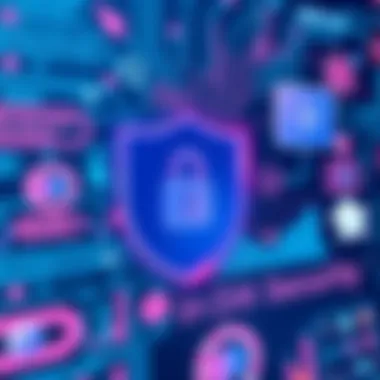
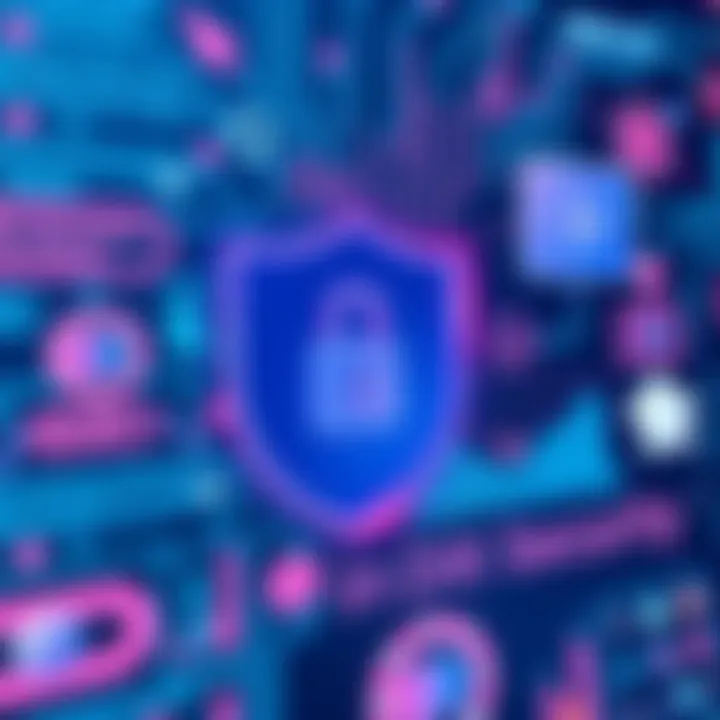
The adoption of Therapy Notes EHR brings forth a cornucopia of benefits that address the day-to-day challenges practitioners and patients face in mental health care. This section elaborates on why the integration of such systems is crucial for modern mental health practices. The overwhelming emphasis is on improving patient care, enhancing the efficiency of practitioners, and optimizing data management and analysis.
Improved Patient Care
The primary goal of any healthcare system is to deliver quality patient care, and Therapy Notes EHR significantly contributes to this aim. By streamlining processes, it allows practitioners to focus more on their patients rather than getting bogged down in administrative tasks. For instance, with an EHR, a therapist can quickly access a patient's treatment history, medication records, and previous notes. This immediate access to pertinent information helps clinicians make informed decisions in real-time, leading to more personalized treatment plans.
The software also facilitates better communication between providers. Consider a scenario where a patient requires a referral to a psychiatrist. With Therapy Notes, the referral process can be seamless, ensuring that the new provider gets a complete picture of the patient’s history without unnecessary delays. This comprehensive approach not only improves patient outcomes but also enhances overall satisfaction.
In essence, more efficient care leads to better adherence to treatment protocols and increases the likelihood of positive health outcomes.
Enhanced Efficiency for Practitioners
When it comes to the day-to-day workings of a mental health practice, time is always at a premium. Therapy Notes EHR is tailored specifically to enhance the efficiency of practitioners. With features like automated appointment scheduling, billing processes, and clinical documentation, the need for manual oversight diminishes significantly. This allows therapists to dedicate more time to their patients.
For instance, billing issues can often divert attention from patient care. Therapy Notes simplifies billing and insurance processing with built-in features that automatically generate claims and track payments. This not only reduces the time spent on administrative burdens but also minimizes the risk of claims rejections due to errors.
Moreover, with user-friendly interfaces that allow quick access to various functionalities, practitioners can navigate the system with relative ease. In an age where everyone is trying to do more with less, this increased efficiency can make all the difference in a busy therapy office.
Data Management and Analysis
In an era driven by data, Therapy Notes EHR excels in managing and analyzing large volumes of patient information. The application consolidates data in a way that facilitates informed decision-making. Practitioners can utilize analytics tools to explore trends in patient health outcomes, treatment effectiveness, and even operational metrics.
For example, consider a practice that leverages data analytics to assess the effectiveness of their therapy methods. By examining patterns in patient progress through comprehensive reports generated by Therapy Notes, therapists can adjust treatment strategies accordingly. This analytical capability turns data into actionable insights, ultimately fostering a more dynamic approach to therapy.
Furthermore, effective data management ensures that a mental health practice remains compliant with regulatory standards, thus reducing the risk associated with improper handling of sensitive patient data. The implications extend beyond safe practices; they impact overall service quality, reinforcing the critical role of data integrity in patient care.
In summary, the benefits of using Therapy Notes EHR are deeply intertwined with the core objective of improving mental health care delivery. From enhancing patient care to increasing practitioner efficiency, and through robust data management, these EHR systems represent a leap forward in seamlessly integrating technology into healthcare solutions.
Challenges and Limitations
When delving into the realm of Therapy Notes EHR solutions, it is paramount to address the challenges and limitations that come along with the adoption and use of such technology. Acknowledging these aspects not only informs decision-makers but also prepares practices to navigate potential pitfalls with grace. Though the benefits can be numerous, it’s the hurdles that often define the success or failure of EHR implementations.
Integration with Existing Systems
Integrating Therapy Notes EHR with existing systems poses a considerable challenge for many practices. Suppose a mental health facility has utilized a particular software suite for years; integrating the new EHR may disrupt routine workflows in the short run. This can result in double data entry or, worse yet, lost information.
To mitigate this issue, practices must assess their current systems thoroughly before transitioning. A tailored plan should identify which existing tools remain useful and ascertain how they will interact with the new system. One approach is to opt for software that offers robust API capabilities, allowing seamless communication between systems. An investment in custom integration can also smooth the path, though it demands significant resources and planning. Remember, "a stitch in time saves nine"; tackling integration early reduces headaches later.
User Adoption and Training
No matter how feature-rich a software may be, it can only thrive if the users are comfortable with it. Resistance to change is human nature and can manifest in many forms, from outright refusal to subtle disengagement. This is where focused training programs come into play. A study showed that inadequate training leads to lower user satisfaction, which directly impacts EHR utilization.
Offering a multi-faceted training approach is essential. Blend one-on-one sessions with group workshops and digital resources. Encouraging questions and feedback can foster a culture of learning, ensuring users feel competent instead of overwhelmed. Consistent follow-ups after the initial rollout can keep momentum and clarify lingering uncertainties. In this instance, it’s crucial to remember: "You can lead a horse to water, but you can’t make it drink".
Regulatory Compliance Issues
Compliance with regulations is a high-stakes game in the healthcare sector. With rules evolving and becoming more stringent, a failure to comply with regulations like HIPAA can result in severe penalties. Therapy Notes EHR must inherently support functions that ensure compliance, such as secure data storage, audit trails, and appropriate access controls.
Practices must perform regular audits of their EHR systems to ensure ongoing compliance. Staying up-to-date with changes in regulations requires vigilance, so appointing a compliance officer or a dedicated team for this role can be beneficial. Adopting solutions that prioritize regulatory compliance from the outset can save practices the trouble of retrofitting systems later on. After all, "an ounce of prevention is worth a pound of cure".
User Experience Insights
User experience plays a pivotal role in the effectiveness of Therapy Notes EHR solutions. It is not merely about how easy a system is to navigate. The nuances of user experience touch on satisfaction levels and practical workflows, influencing not just the productivity of practitioners but also the quality of patient care. When professionals can leverage an intuitive platform, they can focus more on what matters—healing and supporting their clients.
User Feedback and Satisfaction Levels
Understanding user feedback is like holding a mirror to the software's performance in real-world settings. It sheds light on the areas where Therapy Notes EHR excels and where it might fall short. Frequent surveys and direct feedback from users provide valuable insights that help developers fine-tune their offerings. Practitioners often report varying levels of satisfaction based on their specific needs. For instance, therapists might appreciate the robust appointment management feature but find billing options a bit cumbersome.
Some key elements around user satisfaction include:
- Ease of Learning: Many professionals review the initial learning curve, implying that a system that takes less time to master can significantly enhance their workflow.
- Support and Training: Users tend to score platforms higher when they receive adequate support and training resources from the provider.
- Customizability: The ability to tailor the software to individual practice preferences has been highlighted as a significant contributor to overall contentment.
Feedback helps drive improvements; when one practitioner mentions a bug, many others could benefit from that knowledge.
Case Studies of Implementation
Analyzing real-life implementations of Therapy Notes EHR provides a wealth of information that can be more enlightening than generic explanations. For instance, one medium-sized practice in California transitioned from paper records to Therapy Notes EHR and documented a notable reduction in administrative burdens. They utilized the software’s documentation templates to expedite note-taking and experienced a drop in time spent on paperwork.
Another case study involves a group practice that faced serious challenges with interoperability. After integrating Therapy Notes EHR within their existing systems, they observed improvements in data sharing across platforms. These practical examples underscore how the application can be molded to fit specific operational needs, making it not just a one-size-fits-all solution.
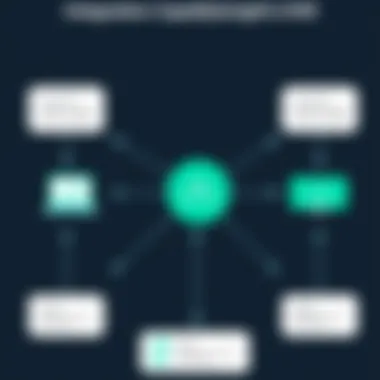
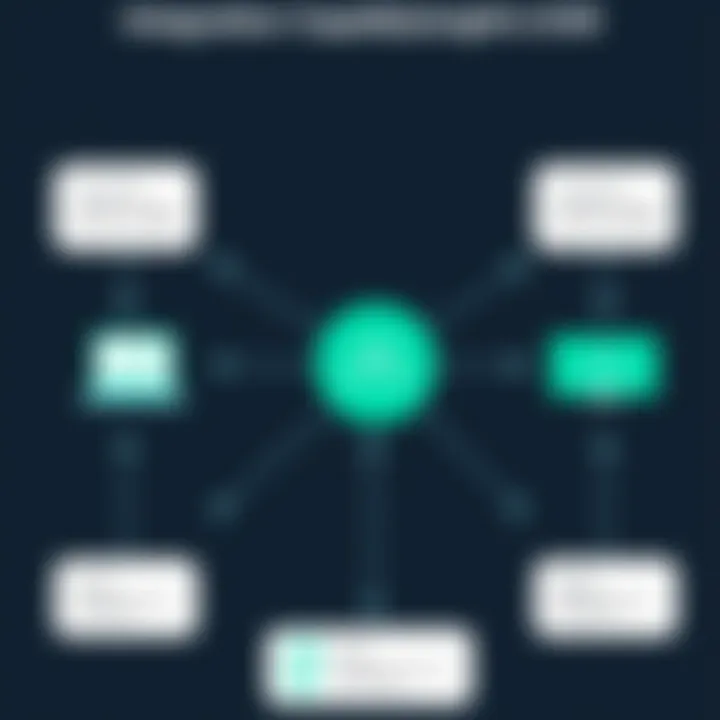
Comparative User Experiences Across Platforms
When pitting Therapy Notes EHR against other EHR systems, user experience reveals interesting contrasts. Some users have shared on platforms like Reddit that they found Therapy Notes more intuitive than competitors such as SimplePractice or TheraNest. Many professionals appreciate its streamlined design and straightforward navigation compared to more complex systems that can load users down with unnecessary features.
- Performance: Therapy Notes reportedly performs well even with heavy data loads, unlike certain competitors that slow down during peak operational hours.
- Integration: Many practitioners noted how smoothly Therapy Notes integrates with third-party applications, making data transfer less of a headache than systems that require manual updates.
- Community Feedback: Engaging platforms like Facebook and wellness forums highlight the differences in user support among different software solutions, where Therapy Notes tends to have a reputation for responsive customer service.
It is clear that user experience is crucial in the evaluation of Therapy Notes EHR solutions. As technology continues to evolve, so too does the need for practitioners to critically assess the software they incorporate into their practices.
Security and Compliance
In today’s digital era, the security and compliance of electronic health record (EHR) systems take center stage, especially in the field of mental health practice. Given the sensitive nature of the data involved, healthcare providers are tasked with ensuring that patient information is safeguarded against unauthorized access while also adhering to regulatory standards such as HIPAA. A failure to understand or implement proper security measures not only jeopardizes patient trust but can also lead to severe financial repercussions. Thus, a comprehensive grasp of these aspects forms the bedrock of effective therapy note management systems.
Data Security Protocols
Data security protocols are essential in preventing unauthorized access, data breaches, and the overall compromise of sensitive information. Many organizations are adopting layered security strategies which involve:
- Encryption: Converting information into a coded format that can only be read by those who possess the decryption key.
- User Authentication: Using multi-factor authentication processes to confirm the identity of users accessing the system, making it tougher for intruders.
- Regular Backups: Ensuring that data can be restored in the event of corruption or loss. This is often done through both local and cloud-based solutions, offering a safeguard against data loss circumstances.
From the perspective of compliance, these measures are not mere recommendations but pivotal to maintaining operational integrity.
HIPAA Compliance Features
Compliance with the Health Insurance Portability and Accountability Act (HIPAA) is non-negotiable in the realm of health information. Therapy Notes EHR systems are designed specifically to incorporate a range of features to meet HIPAA guidelines:
- Access Control: Only authorized personnel can view or modify sensitive data, minimizing the risk of data leakage.
- Audit Trails: Keeping meticulous logs of who accessed what and when allows practices to monitor potential breaches and ensure accountability.
- Secure Messaging: Facilitating communication between practitioners and clients in a secure environment ensures that details of sessions remain confidential.
Ultimately, the robustness of a practice's adherence to HIPAA can significantly affect its reputation and operational efficacy.
Challenges in Maintaining Secure Systems
Despite the sophisticated measures in place, maintaining secure systems often comes with its own set of hurdles. A few major challenges include:
- Evolving Threat Landscape: Cyber threats continuously evolve, necessitating constant updates and vigilance. The techniques employed by malicious actors grow increasingly clever, forcing organizations to remain on their toes.
- User Compliance: Even with stringent measures, if users do not follow protocols, vulnerabilities can arise. This highlights the need for proper training and reinforcement of security policies.
- Resource Constraints: Smaller practices may struggle to allocate enough budget or personnel to implement and uphold comprehensive security measures.
As organizations seek to navigate these challenges, the emphasis on ongoing education and adaptation becomes clearer. Employing rigorous training sessions for the staff can create a security-conscious culture that bridges the gap between technology and human factors.
Integration and Interoperability
The landscape of data management in mental health practices is constantly evolving, and the need for robust integration and interoperability among Electronic Health Record (EHR) systems like Therapy Notes is paramount. Without integration, the potential benefits of EHR systems become severely limited. A seamless connection between various systems not only enhances the efficiency of medical practices but also ensures that patient care is of the highest standard.
In the realm of mental health, patient information can come from diverse sources—ranging from primary care physicians and specialists to labs and imaging centers. Effective integration helps to gather and utilize this data efficiently, minimizing the chances of miscommunication or data mismanagement. Additionally, interoperability allows therapists to easily access necessary patient histories, leading to better-informed treatment decisions.
API Capabilities
Application Programming Interfaces (APIs) play a crucial role in establishing interoperability between Therapy Notes and other software solutions. An effective API can enable different systems to communicate and share data smoothly.
For instance, consider a case where a therapist needs to retrieve lab results from a clinical laboratory system. A well-designed API would permit this information to be pulled automatically into the Therapist’s EHR dashboard, saving time and avoiding the necessity of manual data entry.
Key Aspects of API Capabilities Include:
- Data Retrieval and Submission: Facilitating quick access to patient records from various sources.
- Real-time Updates: Ensuring all users have the most current patient information.
- User-Friendly Interface: Simplifying interactions between disparate systems without sacrificing usability.
Thus, investing in EHR solutions with strong API capabilities can enhance the overall functionality of a practice's workflow.
Third-Party Application Integrations
Integrating third-party applications into Therapy Notes offers additional features that enhance user experience and operational efficiency. Such integrations include tools for telehealth, billing, and appointment scheduling, which can work in harmony with the primary EHR functionalities.
For example, many practices rely on video conferencing tools for teletherapy sessions. If Therapy Notes allows seamless integration with platforms such as Zoom or Doxy.me, patients can have their appointments without hassle, leading to greater patient satisfaction. Furthermore, integrating billing platforms can ensure that payment collections occur without administrative burdens.
Some Popular Third-Party Applications for Integration Include:
- Telehealth Services: Enabling virtual appointments convenient for both practitioners and patients.
- Billing Software: Automating invoicing and payments, reducing error rates in financial transactions.
- Practice Management Tools: Helping with scheduling, reminders, and overall practice administration.
Common Integration Challenges
Despite the immense advantages of integration and interoperability, several challenges can arise during the implementation phase.
One of the most significant issues is the lack of standardization among different EHR systems, creating gaps that prevent seamless data sharing. For example, even if two practices use EHR systems with APIs, if the data formats do not align, issues can arise. Additionally, the process can become cumbersome if stakeholders do not understand the technical requirements and limitations of various systems.
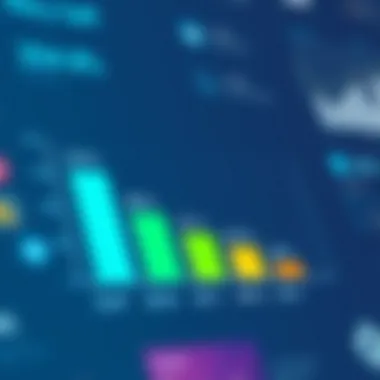
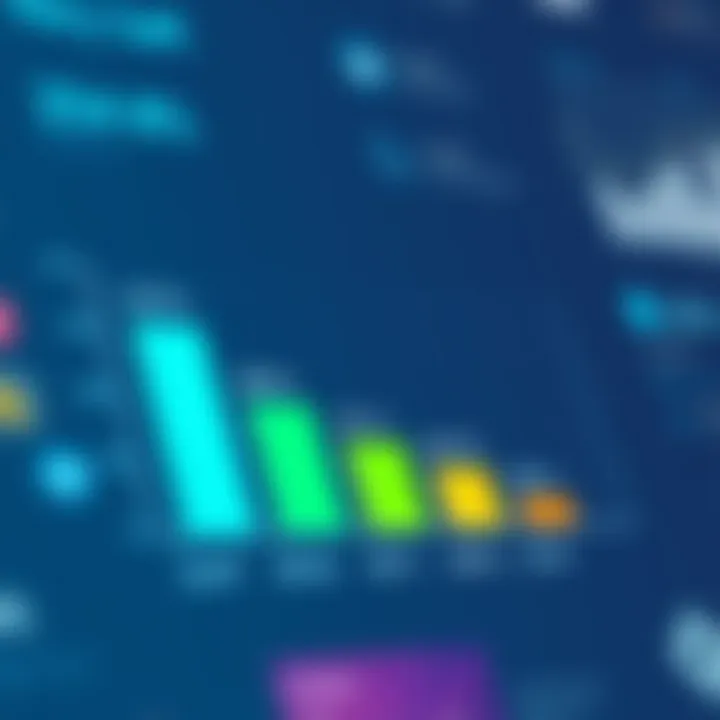
Frequently Encountered Integration Challenges Include:
- Data Format Compatibility: Difficulty in aligning differing data structures and terminologies.
- Cost Implications: The financial outlay for connecting various systems often becomes a sticking point for many practices.
- Training and Adaptation: Ensuring that staff are well-versed in new integrations can take time and resources.
Cost Considerations
When evaluating any EHR solution like Therapy Notes, the topic of cost cannot be brushed aside. It bears significant weight, influencing the decisions of healthcare professionals who aim to allocate their budgets wisely. Understanding the financial implications helps in assessing not just the immediate outlays but also the long-term value these systems bring to practices. This section delves into crucial elements to consider when navigating the costs associated with Therapy Notes EHR.
Pricing Models
Pricing models for Therapy Notes EHR are often multifaceted, reflecting the diverse needs of users. Generally, the software is offered under a subscription model, which can either be billed monthly or annually. This approach allows professionals to access essential features without upfront costs that can break the bank. However, hidden fees can lurk in the shadows; it's vital for decision-makers to scrutinize contracts for potential additional charges.
Some distinct elements to consider in these models include:
- Basic vs. Advanced Features: A bare-bones package may cost less, but might lack key functionalities, compelling practitioners to upgrade later.
- User Counts: Pricing often scales upward with the number of users; a solo therapist might find it economical, but multi-practitioner setups could pay a premium.
- Extended Support and Training: Often, additional support services come with their own price tag. While some might find do-it-yourself guides sufficient, others might need hands-on training, which can add to costs.
Understanding these models is crucial, as an informed choice ensures that resources are spent on what adds genuine value to the practice.
Return on Investment Analysis
Conducting a return on investment (ROI) analysis is essential for any investment in software solutions, especially in the realm of healthcare. With Therapy Notes EHR, the ROI reflects both tangible and intangible benefits.
On the tangible side, factors include:
- Time Saved in Administrative Tasks: Automation features streamline mundane chores, allowing clinicians to focus more on patient care rather than paperwork.
- Enhanced Billing Accuracy: The software helps minimize billing errors, reducing denials and accelerating payment cycles.
Intangible benefits might be less easy to quantify, but they are equally indispensable:
- Improved Patient Satisfaction: Streamlined processes result in less time spent on administrative tasks and higher quality interactions during therapy sessions.
- Long-Term Client Retention: A smooth experience can build lasting relationships, ensuring compliance and encouraging referrals.
Calculating ROI requires a careful consideration of all these snippets, helping professionals glean a clearer picture of the value that Therapy Notes EHR can offer over time. The better the understanding of expenses versus benefits, the better the decisions in choosing such important systems.
"Investing in the right EHR system is not just about the dollars spent upfront, but about the long-term dividends they can yield in practice efficiency and quality of care."
Future Trends in Therapy Notes EHR
As the landscape of healthcare continuously evolves, so too do the tools that support it. The future of Therapy Notes Electronic Health Records (EHR) solutions stands at a fascinating crossroads, poised to leverage advances in technology while meeting the changing needs within mental health practice. Understanding these trends is crucial for stakeholders looking to maintain a competitive edge, improve patient outcomes, and streamline operational efficiency.
Emerging Technologies in Healthcare IT
The integration of emerging technologies into Therapy Notes EHR solutions is reshaping the way mental health practices operate. Artificial Intelligence (AI) is becoming a game-changer. From predictive analytics that help clinicians assess patient risk factors to natural language processing for better documentation, AI enhances both the quality of care and administrative tasks.
Telehealth Integration: This trend has gained momentum, especially recent years. Being able to conduct therapy sessions remotely has proven invaluable. Therapy Notes EHRs are increasingly incorporating telehealth functionalities, allowing practitioners to offer virtual visits seamlessly within the same platform used for scheduling and billing.
- Benefits of Telehealth Integration:
- Increased Accessibility: Patients can attend therapy from the comfort of their homes.
- Expanded Reach: Therapists can serve clients in remote or underserved areas.
Moreover, data interoperability among disparate healthcare systems is also on the rise. This allows therapists to exchange vital patient data more efficiently, thereby enhancing collaborative care efforts with other healthcare providers.
Predicted Evolution of EHR Systems
The future will likely see a more personalized approach to EHRs. Tailored functionalities, adaptable workflows, and customizable reporting mechanisms will become standard as mental health practices strive for optimal efficiency. EHR systems are transitioning from being mere storage solutions to comprehensive tools for managing the entire patient care experience.
- Key Evolutionary Trends:
- User-Friendly Interfaces: Expect more intuitive designs making it easier for practitioners to navigate their workflow.
- Mobile Access: With busy lifestyles, having mobile-friendly applications allows therapists to manage their patients on the go.
- Data-Driven Insights: The future EHRs will leverage big data analytics to provide actionable insights tailored to specific patient populations, improving overall treatment outcomes.
In summary, the future of Therapy Notes EHR solutions is geared towards innovation that enhances both patient and provider experiences. As integration of technologies such as AI and telehealth become more prevalent, practitioners have an opportunity to not only improve their operational efficiency but also elevate the standards of care they provide. Stakeholders must remain vigilant to these trends and proactive about adapting their practices accordingly.
End
In the realm of mental health practices, Therapy Notes EHR solutions represent more than just software; they are transformative tools that can significantly enhance both patient care and practitioner efficiency. This article underscores the pivotal role that these platforms play in modern clinical environments.
Importance of a Robust EHR System:
Therapy Notes EHR systems cater specifically to the nuanced needs of mental health professionals. A well-implemented EHR can streamline clinical documentation, making it easier for clinicians to focus on patient interactions rather than administrative burdens.
Key Takeaways:
- Improved Patient Care: By having comprehensive and accessible patient records, therapists can make better-informed decisions, ultimately leading to more tailored and effective treatment plans.
- Operational Efficiency: Automation of routine tasks like scheduling and billing allows practitioners to utilize their time more effectively, supporting a greater number of patients.
- Enhanced Data Management: The ability to gauge treatment outcomes, track patient progress, and analyze data patterns can improve overall practice performance and, by extension, patient satisfaction.
"To err is human, but to really foul things up you need a computer." This tongue-in-cheek observation resonates with today's healthcare landscape, where the integration of technology into mental health practices is both a necessity and a challenge.
The challenges surrounding integration, user adoption, and compliance cannot be ignored. For any mental health professional considering Therapy Notes EHR, understanding and addressing these limitations is crucial. They highlight the need for thorough evaluation and training to maximize the potential of these systems.
Wrapping It Up:
As this article illustrates, embracing Therapy Notes EHR solutions is not merely a trend but a step toward a more efficient and effective mental health practice. For stakeholders, the insights gleaned from this analysis offer a compass to navigate the complexities of selecting and implementing EHR systems.







